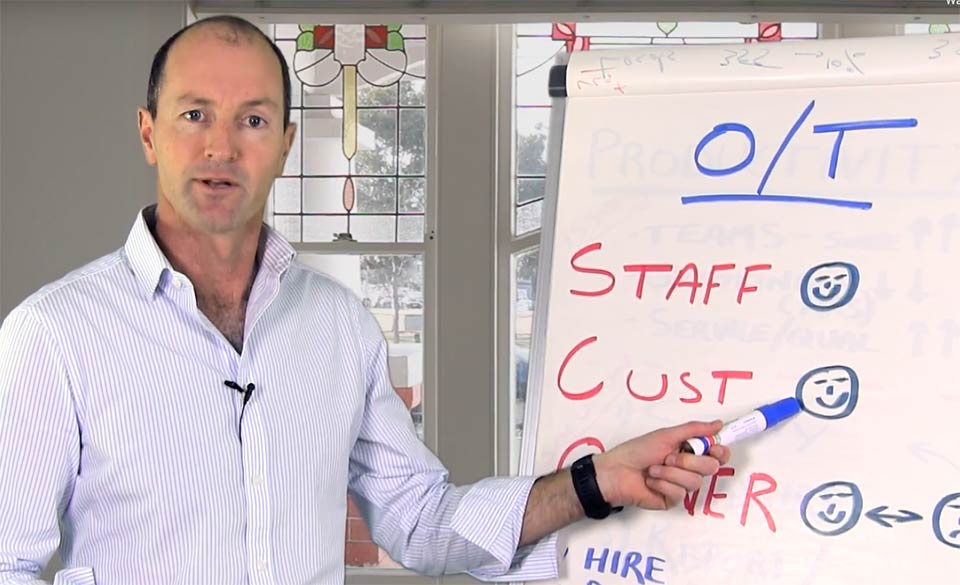Factoring in your overheads
Today we’re going to learn about how to allow for overheads when calculating cost plus work. Knowing how to do this will help keep your business profitable and will ensure all your hard work pays off. As in some previous topics in this series, using an example will help to demonstrate how this is done. So follow along and remember, you can always call me (Ph: 0409 402 474) if you have any questions.
Overheads can be defined as ongoing costs (fixed or variable or both) to operate a business but excludes the direct costs associated with creating a product or service. This could be warehouse rent, utilities (electricity & water), mobile phones, vehicles and equipment, reception for example. For larger businesses these might be divided up into separate categories such as plant and equipment, administration and leasing.
Below is a simple Profit and Loss statement for a company.
| Sales | $100 |
| Cost of Sales | |
| Labour + Materials | $50 |
| Overheads | |
| Rent & Phone | $20 |
| Profit | $30 |
Accountants view overheads as a percentage of sales so we need to –
$20/$100 = 20%
When it comes to factoring in the real cost of overheads we need to take into account other factors to remain profitable. To work out that multiplier we need to divide overheads by the cost of sales and turn it into a percentage –
$20/$50 = 40%
So when you are pricing up a job using the cost plus technique, you need to add up all the labour, holidays and employment costs materials, freight and phone etc. then add on $40% of that figure to cover overheads.
So read over this a couple of times so you understand the process and feel confident to use it. If you have and questions feel free to call me to learn more. I get a real sense of satisfaction helping trades and technical businesses become profitable.
The next step is to calculate profit and that is coming up in the next video.








